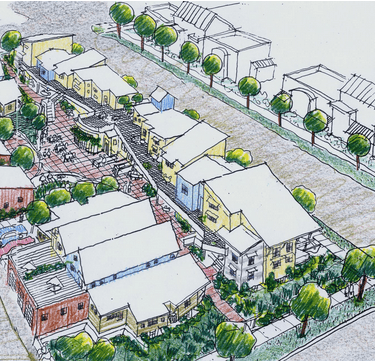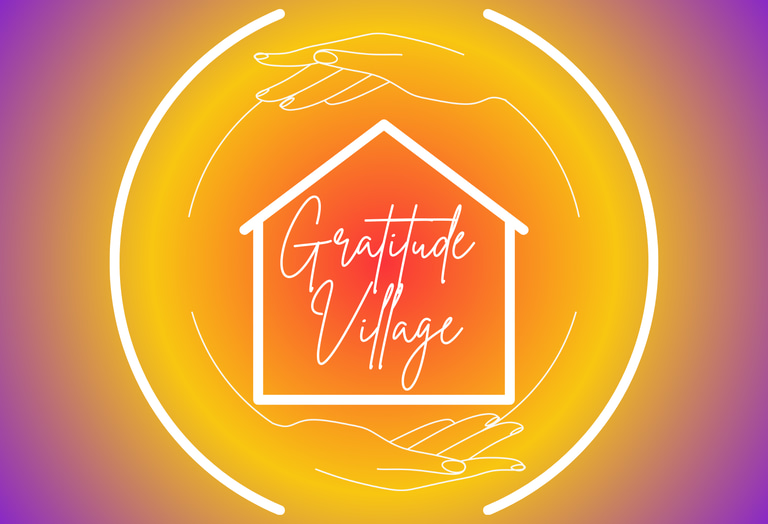Join us for an Evening with Charles Durrett 9/18/25 6-8pm Tickets available here!
Meet the Architects: Designing Gratitude Village
What if neighborhoods were designed not just for housing, but for connection? Imagine tree-lined paths that invite evening strolls and impromptu conversations, a common house where neighbors share meals and laughter, and gardens that feed both bodies and friendships. This is the vision at the heart of Gratitude Village, and it’s being shaped with the guidance of Charles Durrett—Principal at The Cohousing Company—and Michael Tavel, Partner at SunStudio Design.
Gratitude Village
8/31/20253 min read


What if neighborhoods were designed not just for housing, but for connection? Imagine tree-lined paths that invite evening strolls and impromptu conversations, a common house where neighbors share meals and laughter, and gardens that feed both bodies and friendships. This is the vision at the heart of Gratitude Village, and it’s being shaped with the guidance of Charles Durrett—Principal at The Cohousing Company—and Michael Tavel, Partner at SunStudio Design.
Durrett, author of Creating Cohousing, has spent more than three decades designing neighborhoods where people thrive. “Design is never neutral,” he says. “It either brings people together or pushes them apart. We choose connection.” This philosophy is exactly why we’ve partnered with Durrett and Tavel to create Colorado’s first mixed-income cohousing community—a place where great design turns neighbors into friends and sustainability into a shared value.
Step One: The Core Founders Group
Before a single line is drawn on a blueprint, we begin with people. Gratitude Village is forming a core founders group of 15 to 20 households who will help shape every major decision in the design process. These individuals and families will be the heart of the community, ensuring that what we build reflects real needs and shared values.
By collaborating directly with the architects, this group will weigh in on everything from the layout of homes and the location of gardens to the amenities in our common house. This is what sets cohousing apart from traditional developments—future neighbors have a hand in designing the very community they will call home.
“The best neighborhoods aren’t built by developers. They’re built by neighbors.”
Walkable, Welcoming, and Wonderfully Green
Instead of car-centric streets, Gratitude Village will feature pedestrian-friendly pathways designed to make connection easy and natural. Homes will be linked to shared amenities—like play areas, gardens, and gathering spaces—so neighbors see each other every day in ways that feel organic.
A landmark study published in the American Journal of Public Health found that residents in walkable neighborhoods have significantly higher levels of social capital—meaning they are more likely to know their neighbors, trust others, and be engaged in their community (Leyden, 2003). More recently, UC San Diego research confirmed that walkability continues to be a powerful driver of social connection, with adults in walkable neighborhoods reporting stronger community ties and more frequent social interactions (UC San Diego).
When the design of a neighborhood encourages people to slow down, walk, and interact, community stops being accidental—it becomes inevitable.
Spaces that Spark Connection
At the center of the neighborhood will be the common house—the beating heart of Gratitude Village. This shared space will host community dinners, movie nights, and celebrations that bring neighbors together. But it won’t stop there: we’re also planning a cozy hearth room for winter gatherings, a teen lounge, coworking spaces, guest suites, and even a library nook for quiet reading or casual conversations.
Each space is designed with purpose. These areas don’t just add convenience; they turn strangers into neighbors and neighbors into friends. As Charles Durrett explains, “When you give people the right spaces, you don’t have to force community. It happens naturally.”
“Great design turns strangers into neighbors and neighbors into friends.”
Building for a Sustainable Future
Gratitude Village is not only a community built for people—it’s a community built for the planet. Every home will be Passive House certified to maximize energy efficiency and reduce costs for residents. All shared spaces will be LEED-certified, ensuring that sustainability is at the heart of every design decision.
Beyond energy efficiency, we are incorporating features such as shared gardens, composting stations, and green roofs. These environmentally friendly choices mean that residents will live lighter on the earth while also benefiting from lower utility costs and healthier surroundings. And with up to 50% of homes permanently affordable, Gratitude Village is building not just environmental sustainability, but economic and social sustainability as well.
Why Design Matters
Too often, housing is treated as a product, not a process. But the design of our neighborhoods shapes how we live, how we interact, and even how we feel. At Gratitude Village, design is intentional: from walkable paths to shared green spaces, every choice supports connection and belonging.
When people feel connected, they thrive. They support each other, share resources, and create a culture of care that benefits everyone. In that sense, great design is not just about aesthetics—it’s about shaping a better way to live.
“Connection doesn’t just happen. It’s designed.”
Join Us and Help Shape the Future
On September 18, Charles Durrett will join Gratitude Village for an event that brings this vision to life. You’ll have the chance to meet the architect behind the cohousing movement, learn how design fosters community, and discover how you can be part of building Colorado’s first mixed-income cohousing neighborhood.
This is more than an event—it’s an invitation to help design a new way of living, one where connection, sustainability, and affordability come together.
📅 Reserve your spot now: Register for the event
💛 Become an Explorer: Join Gratitude Village
COMMUNITY
Join us in embracing nature, diversity and connection.
SUSTAINABILITY
DIVERSITY
info@gratitudevillagecolorado.com
720-689-4821
© 2024. All rights reserved.
AFFORDABILITY
Subscribe to our Substack
Gratitude Village Inc. is a 501(c)3 charitable corporation that values diversity, equity, and inclusion as essential to our mission
